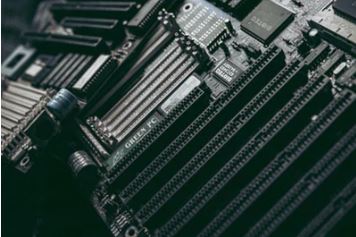The era of infrastructure DIY is dead
DIY is dead. The time when you could “do it yourself” is no longer relevant for IT Infrastructure.
It may take a while for it to happen, but it has happened before – to desktop PCs. Approximately 20 years ago, it was both cheaper and easier (if you knew how) to buy your computer parts and assemble it yourself. An off-the-shelf desktop PC was often more expensive, so many people would build their own computers – and small to medium businesses would contact a local computer shop to obtain the ISA motherboards, floppy disk drives and VGA cards, and then put them together to meet the specified needs of the business. As each business needs were different, customised solutions were provided by the small IT shops that were local to the office needs. As IT matured and business demands grew to need more than a few computers, organisations would move away from the DIY approach, towards a standardised and consistent solution provided by a computer vendor (not a parts vendor).

The decision was made to move from a bespoke, hand-built, customised, localised, and considered to be “optimised for their needs” approach. Computer vendors enticed customers with standardised solutions that would meet the needs of almost all businesses, and added in capabilities such as centralised management solutions, asset management services, discounted upgrades and economies of scale. Businesses grew and soon realised that it was often much better in the long run to use more and more services from the computer vendor, embrace new upgrades and changes, and allow for component vendors to be selected by the computer vendor. The whole industry changed, and operating systems and software also took advantage of this – building centralised management capabilities, building in drivers for commonly used hardware from the computer vendors. It then became almost irrelevant what model – or even make – of computer was in use. Of course being consistent would make it easier to manage, but then there were vendor-agnostic management tools and capabilities.
If you disagree with that analogy (lots of holes in it of course, such as people who still build their own PCs – but to meet their own bespoke and custom needs), then try considering the analogy of car engines. It used to be expected that if your car broke down, you would open the bonnet/hood and be able to fix it in some way. Or you could do your own servicing or maintenance on a weekend – not really as likely with a modern car. Specialised equipment or tools would be required, and most of the working parts are hidden away or locked down, now DIY is dead.
Don’t build your own infrastructure
Take the analogy towards a datacentre and it is easy to see where we are heading – a move from hand-built, customised solutions made with local on-site staff, built specifically to meet “the unique needs to the business”. Instead, the focus should be on finding a vendor who provides the solutions that meet your business requirements.
I’ve worked at banks, utilities, and government organisations, in my role of designing, building, maintaining and enhancing their local IT infrastructure – something that is not the core business of the organisation. My career over the last 24 years has been in building Infrastructure for businesses that are not IT organisations – but now I can see that the future for this is fruitless. IT is a service. So DIY is dead, take your needs to the experts.
